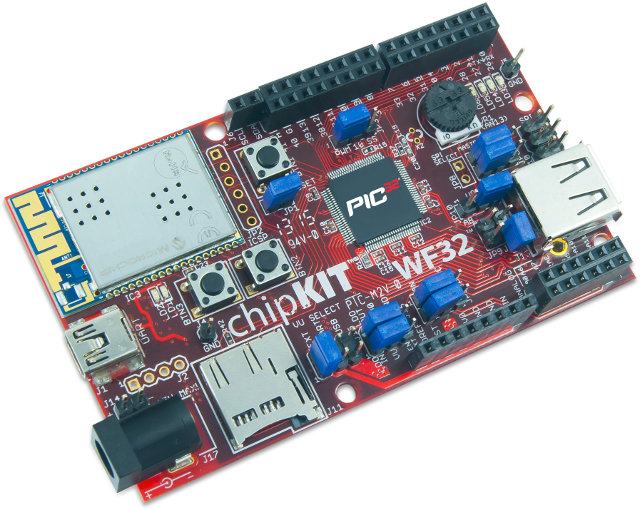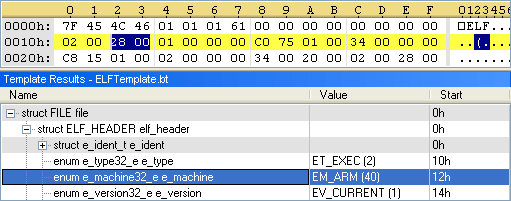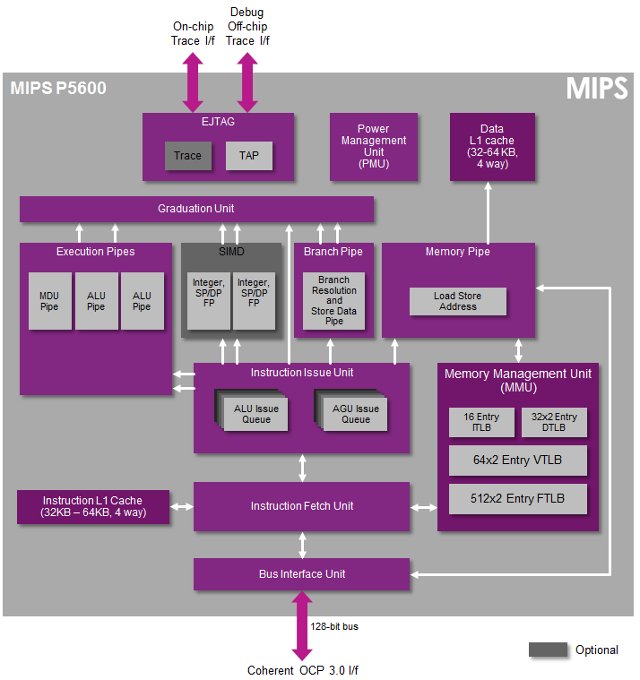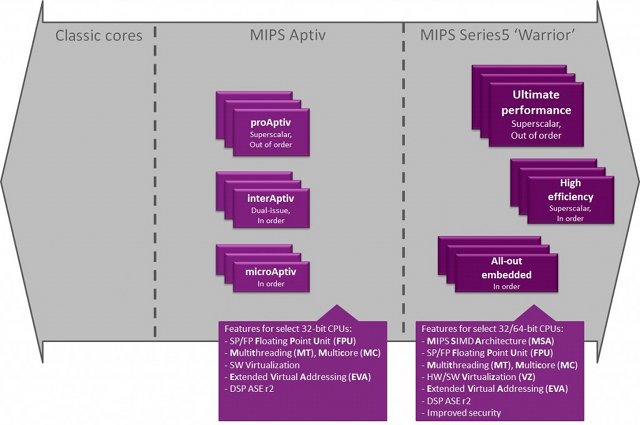In what looks like an answer, albeit fairly late, to Linaro, the non-profit organization working on open source software for ARM based SoCs, a consortium of companies composed of Imagination Technologies, Broadcom, Cavium, Lantiq, Qualcomm, Ingenic, and a few others, has funded Prpl (pronounced Purple), “an open-source, community-driven, collaborative, non-profit foundation targeting and supporting the MIPS architecture—and open to others—with a focus on enabling next-generation datacenter-to-device portable software and virtualized architectures”. The Prpl foundation will focus on three key objectives: Portability – To create ISA agnostic software for rapid deployment across multiple architecture Virtualization & security – To enable multi-tenant, secure, software, environments in datacenter, networking & storage, home, mobile and embedded Heterogeneous Computing – To leverage compute resources enabling next generation big data analytics and mining Initially there will PEG (Prpl Engineering Group) to take of the following projects for 4 market segments (datacenter, network & storage, connected consumers, […]
Embedded Linux Conference 2014 Schedule
The Tenth Embedded Linux Conference (ELC 2014) will take place on April 29 – May 1, 2014 at the San Jose Marriott in San Jose, California. The event will feature 90+ sessions on embedded Linux, Android and IoT with over 450 attendees expected to attend. It will also be co-located with Android Builders Summit and the AllSeen Alliance Hackfest. Even if you can’t attend it’s still interesting to see what will be discussed at the event to get a grasp of on-going developments, learn a few things about different optimization techniques, and so on. So I’ve gone through the sessions’ description, and I’ve designed my own virtual schedule with sessions that could be of interest. April 29 9:00 – 9:30 – Keynote: The Paradox of embedded and Open Source by Tim Bird, Sony Mobile Linux has taken the embedded world by storm. Billions (with a ‘B’) of devices have now shipped […]
Microchip Unveils chipKIT Wi-Fi Development Board and Motor Control Shield
Microchip Technology has just announced two new boards by Diligent, part of its Arduino compatible chipKIT ecosystem: chipKIT WF32 board featuring a PIC32 MCU and a Wi-Fi module, and chipKIT Motor Control Shield for servos, steppers, and DC motors. chipKIT WF32 Development Board Board specifications: MCU – Microchip PIC32MX695F512L micro-controller (80 Mhz 32-bit MIPS, 512K Flash, 128K SRAM) External Storage – Micro SD card connector Wi-Fi – IEEE 802.11 b/g via Microchip MRF24WG0MA WiFi module USB – USB 2.0 OTG controller with A and micro-AB connectors for debugging and programing. 43 available I/O pins with 12 analog inputs Misc – 4x user LEDs PC connection uses a USB A > mini B cable (not included) Power – 7V to 15V input voltage (recommended), 3.3V operating voltage, 30V input voltage (maximum), 0V to 3.3V analog input voltage range Microchip has also released an embedded cloud software framework to create Internet of Things […]
Linux.Darlloz Worm Targets Embedded Linux Devices
Symantec has recently discovered a new Linux worm, called Linux.Darlloz, that targets Internet-enabled devices running Linux in addition to traditional computers. That means devices such as home routers, set-top boxes and security cameras could be at risk of infection, although no attacks against non-PC devices have been confirmed yet. The worm exploits an “old” PHP vulnerability, which was patched in May 2012 (PHP 5.4.3, and PHP 5.3.13), and currently only affects Intel (x86) based systems. So you’d need an embedded system powered by an Intel processor, running Linux and PHP to be at risk. Having said that, Symantec also explains code for other architectures such as ARM, PPC, and MIPS, is also present in the worm, and these systems could potentially be at risk too with small modifications. Here’s how the worm operates: Upon execution, the worm generates IP addresses randomly, accesses a specific path on the machine with well-known […]
Imagination Technologies Announced MIPS P5600, the First “Warrior” Core
At the end of June, Imagination Technologies unveiled their MIPS Series5 ‘Warrior’ architecture, featuring 32-bit and 64-bit CPU cores, with features such as hardware and software virtualization, and Extended Virtual Addressing (EVA). The company has recently announced the first member of the family with their MIPS P5600 CPU IP core. The MIPS P5600 core is a 32-bit CPU IP that is said to offer 1.2 to 2x more system performance compared to proAptiv cores, and it supports peak frequencies above 2GHz on TSMC’s 28HPM process node. Performance-wise the core achieves 5 CoreMark/MHz and 3.5 DMIPS/MHz for a single core, which appears to be equivalent to ARM Cortex A15 according to values listed in Wikipedia and EEMBC Coremark results. MIPS P5600 features and benefits: 32-bit MIPS32 Release 5 Instruction Set Architecture 16-stage, wide issue, out-of-order (OoO) pipeline Quad instruction fetch per cycle Triple bonded dispatch per cycle Instruction peak issue of […]
$27 TP-LINK TL-MR10U is an Hackable OpenWRT Wi-Fi Router with a Power Bank
TP-Link WR703N is a cheap 802.11 b/g/n router (you can now get it for about $20) that can easily be hacked to run openWRT and for example, act as an home automation gateway, printer server and more. But if you need a battery powered router for your application, TP-Link TL-MR10U, based on similar hardware as TL-703WR, should be a better match as it comes with a 2600 mAh battery, and costs just about $27 on DealExtreme. Here are the specifications of the device: CPU – Atheros AR9331 CPU @ 400Mhz System Memory – 32MB RAM Storage – 4 MB Flash Connectivity: 10/100 Mbit Ethernet port 802.11 b/g/n 150Mbps 3G support via external USB dongle USB – USB 2.0 port + micro-USB port for power Misc – Serial port access Dimensions – 91mm x 43mm x 25.85mm(L x W x H) The device comes with a microUSB cable and a user’s […]
Linux Kernel 3.10 Released
Linus Torvalds has announced the release of Linux Kernel 3.10: So I delayed this by a day, considering whether to do another -rc, but decided that there wasn’t enough upside. Sure, it hasn’t been as quiet as I’d like, and we had this long discussion about an inode list locking scalability issue over the last week or two, but in the end that issue turned out to not be new, and while we may end up back-porting the eventual resolution to 3.10, it wasn’t a reason to delay the release. Similarly, while I might wish for fewer pull requests during the late rc’s (and particularly the ones that came in Friday evening -inconvenient for a weekend release), at some point delaying things doesn’t really help things, and just makes the pent up demand for the next merge window worse. In other words, I could really have gone either way, but […]
Imagination Technologies Unveils MIPS “Warrior” 32 and 64 Bit CPU Cores
Last year, MIPS announced Aptiv Cores, but since then, the company has been bought by Imagination Technologies, and they’ve recently announced updates to the family, as well as new MIPS Series5 ‘Warrior’ CPU cores during Imagination Summit in Asia. Before I write about the update to Aptiv cores, let me remind you of the 3 Aptiv families: proAptiv – High performance cores (3.5DMIPS/Mhz) to be used in SoC for smartphone, tablets, …. 1 to 6 cores. Roughly equivalent to ARM Cortex A15. interAptiv – Medium performance core (1.7DMIPS/MHz) for mainstream STB, digital cameras, mid-range smartphones. 1 to 4 cores. Equivalent to ARM Cortex A5 microAptiv – Low power MCU and MPU cores Imagination has added a small-footprint single-core version to the interAptiv family without the extra logic associated with multi-core coherency and L2 cache controller, as well as a floating point version to the microAptiv family for applications such as […]










